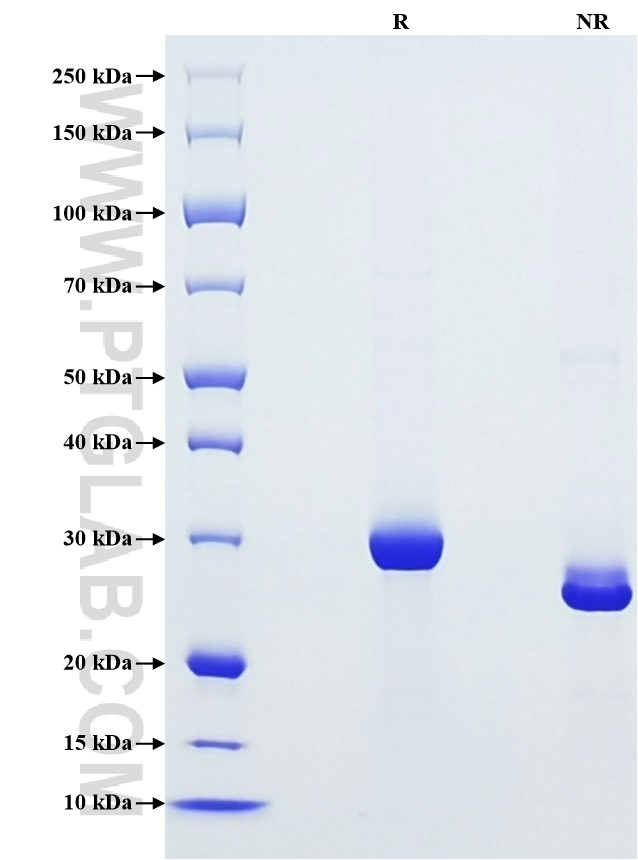Recombinant Human IGFBP-1 protein (His Tag)
种属
Human
纯度
>90 %, SDS-PAGE
标签
His Tag
生物活性
未测试
验证数据展示
产品信息
| 纯度 | >90 %, SDS-PAGE |
| 内毒素 | <0.1 EU/μg protein, LAL method |
| 生物活性 |
Not tested |
| 来源 | HEK293-derived Human IGFBP-1 protein Ala26-Asn259 (Accession# P08833) with a His tag at the C-terminus. |
| 基因ID | 3484 |
| 蛋白编号 | P08833 |
| 预测分子量 | 26.3 kDa |
| SDS-PAGE | 28-32 kDa, reducing (R) conditions |
| 组分 | Lyophilized from 0.22 μm filtered solution in PBS, pH 7.4. Normally 5% trehalose and 5% mannitol are added as protectants before lyophilization. |
| 复溶 | Briefly centrifuge the tube before opening. Reconstitute at 0.1-0.5 mg/mL in sterile water. |
| 储存条件 |
It is recommended that the protein be aliquoted for optimal storage. Avoid repeated freeze-thaw cycles.
|
| 运输条件 | The product is shipped at ambient temperature. Upon receipt, store it immediately at the recommended temperature. |
背景信息
IGFBP-1 (Insulin-like growth factor binding protein-1) belongs to the insulin-like growth factor (IGF) system, which plays an indispensable role in normal growth and development, and in the pathophysiology of various tumors. IGFBP-1 has been shown to be associated with the risk of various tumors, and has a vital function in regulating tumor behaviors such as proliferation, migration, invasion and adhesion through different molecular mechanisms. In addition, As a secreted protein, IGFBP-1 is the most predominant IGFBP in amniotic fluid and expressed steadily and normally in the liver, endometrium and placenta among them. But insulin that can inhibit IGFBP-1 expression through the insulin receptor and growth hormone can regulate IGFBP-1 expression.
参考文献:
1. Yi-Wei Lin. et al. ( 2021). Am J Transl Res. 13(3):813-832. 2. Linn Fagerberg. et al. (2014). Mol Cell Proteomics. 13(2):397-406. 3.T G Unterman. et al. (1991). Endocrinology.128(6):2693-2701.


